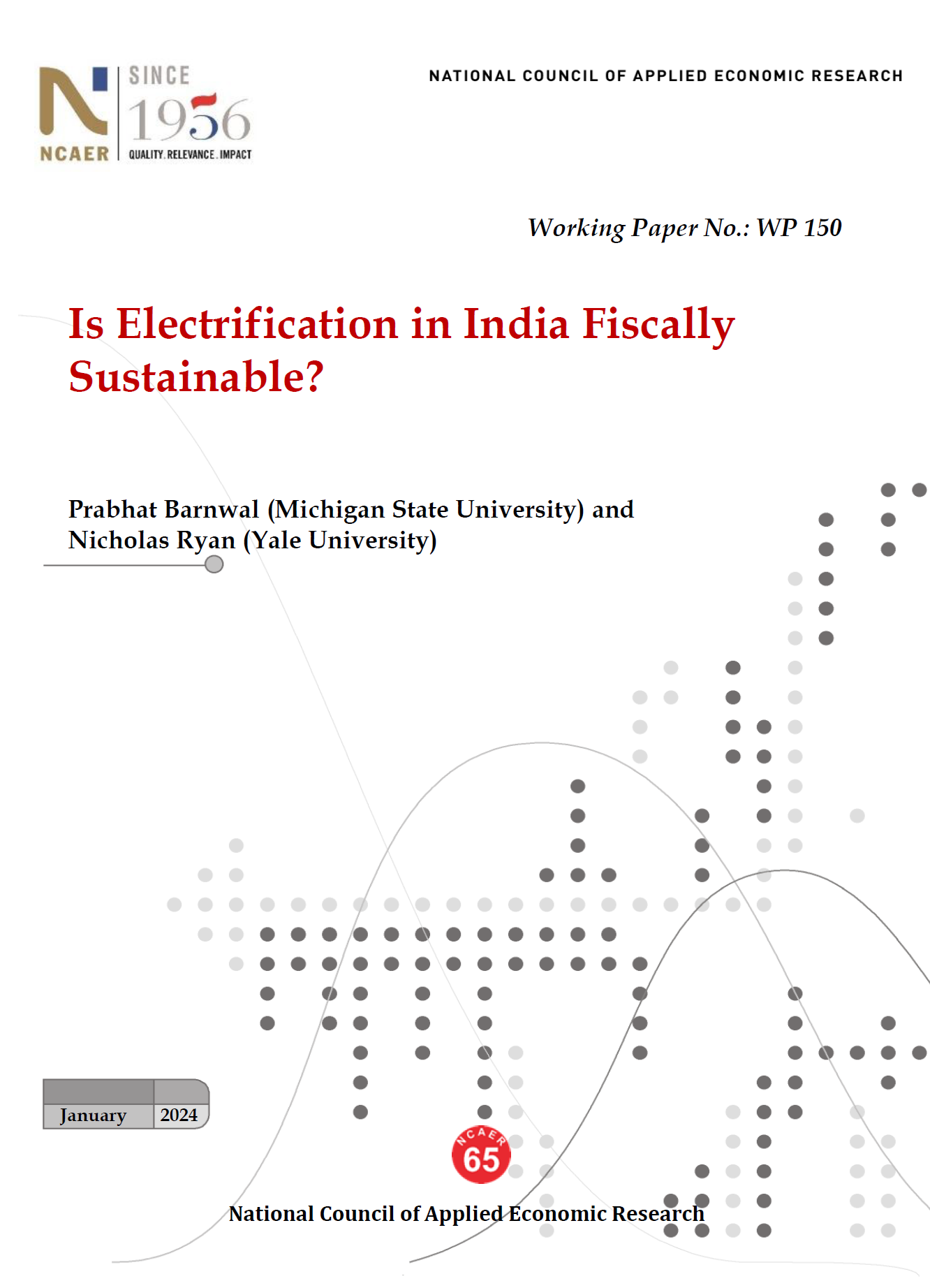Is Electrification in India Fiscally Sustainable?
Prabhat Barnwal
Nicholas Ryan
January 2024
We study the fiscal health of state electricity distribution companies (discoms) in India and its bearing on the supply of electricity. India has, in a policy landmark, lately achieved near-universal household electrification, in large part through Central funding of infrastructure totaling Rs. 5 lakh crores as well as state bailouts totaling Rs. 35 lakh crores since 2001 (both figures in 2022 INR, totaling roughly USD 500 billion). Central and state transfers enable state distribution companies to run ongoing losses, which, in turn, threaten the supply of energy to agriculture and rural households. We find that: (i) the fiscal health of state distribution companies remains concerning, with declared losses of only 2% in 2021-22, far lower than recent trends, rising to 22% when excluding central and state government subsidies; (ii) the proportional losses of the distribution companies, excluding subsidies from the central and state governments, have declined 6 percentage points (on a base of 28%) in the last decade, but their aggregate yearly loss has increased by Rs. 77,000 Cr (43%) due to growth in subsidized consumption; (iii) most gains in reported discom finances are due to the increasing formalization of states bringing electricity subsidies onto their budgets; (iv) states that drew funds under the most recent Central bailout program (the UDAY scheme) have seen smaller gains in efficiency and reductions in losses in recent years than states that did not participate in the bailout. We conclude by discussing the promise of delivering subsidies via Direct Benefit Transfers for Electricity (DBTE) to give discoms incentives for both fiscal independence and more reliable supply and service.
National Growth and Macroeconomic Centre







